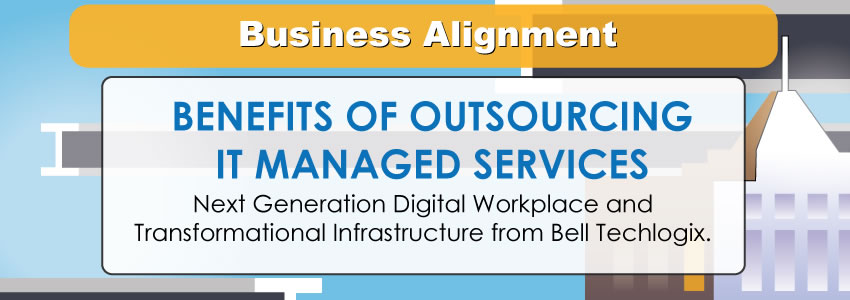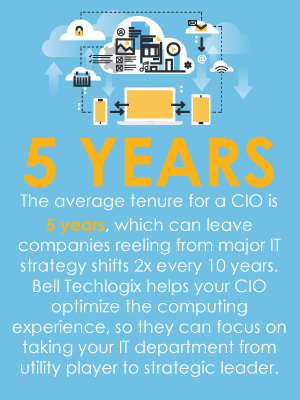IT MANAGED SERVICES & SOLUTIONS

Take your IT department from utility player to strategic leader by optimizing the computing experience of an IT managed service provider like Bell Techlogix.
 Today’s corporations are focused on achieving their business objectives by leveraging big data and proprietary information garnered from every department in their organization. By aligning all stakeholders with overall business goals, the company can operate differently tomorrow than it does today.
Today’s corporations are focused on achieving their business objectives by leveraging big data and proprietary information garnered from every department in their organization. By aligning all stakeholders with overall business goals, the company can operate differently tomorrow than it does today.
Rather than itemizing the IT department as a cost center, a business alignment strategy expects the IT department to participate alongside other departments in the actual transformation of the business. Company leaders are looking to the IT department and its infrastructure functions to be part of and aligned with their long-term business purpose, whether it is to increase growth, rise as industry thought leaders, operate more efficiently or generate new business.
For example, if a healthcare services provider, which places doctors and nurses in hospitals and clinics nationwide, has a business goal to save lives by providing healthcare staffing in areas that need it, the IT department must recognize this priority and align its internal projects and infrastructure to support it. If a CIO envisions a company project that may implement an innovative program, but it doesn't help the company save lives by placing doctors and nurses in areas where they are needed more effectively and efficiently, then that IT project doesn't align with the business strategy of the company. Questions will arise at the higher management and board level over why IT is executing this project. Connecting the projects that an IT department greenlights to the company's longer-term strategy is a critical step towards business alignment.
Consistent Business Alignment Over Time
As a leading information technology managed services and solutions company, Bell Techlogix aligns analytics data and information into an existing business intelligence department, so CIOs they can correlate sales output with IT events, for instance, so a company’s business decisions can leverage the IT information.